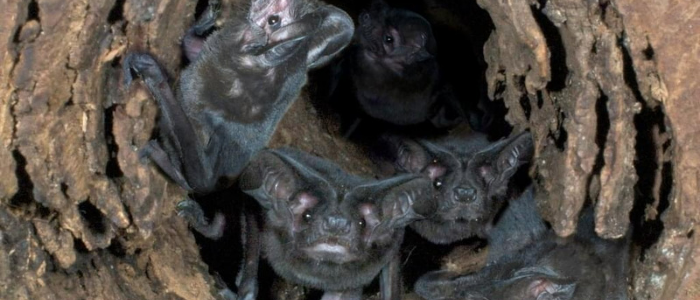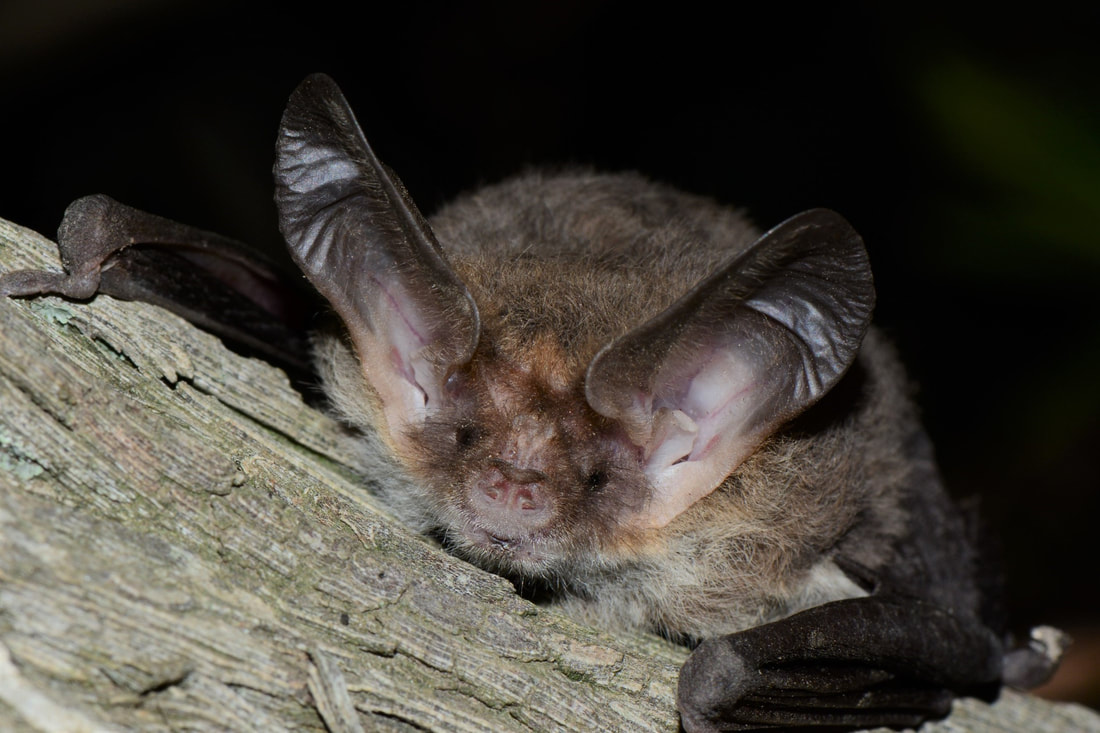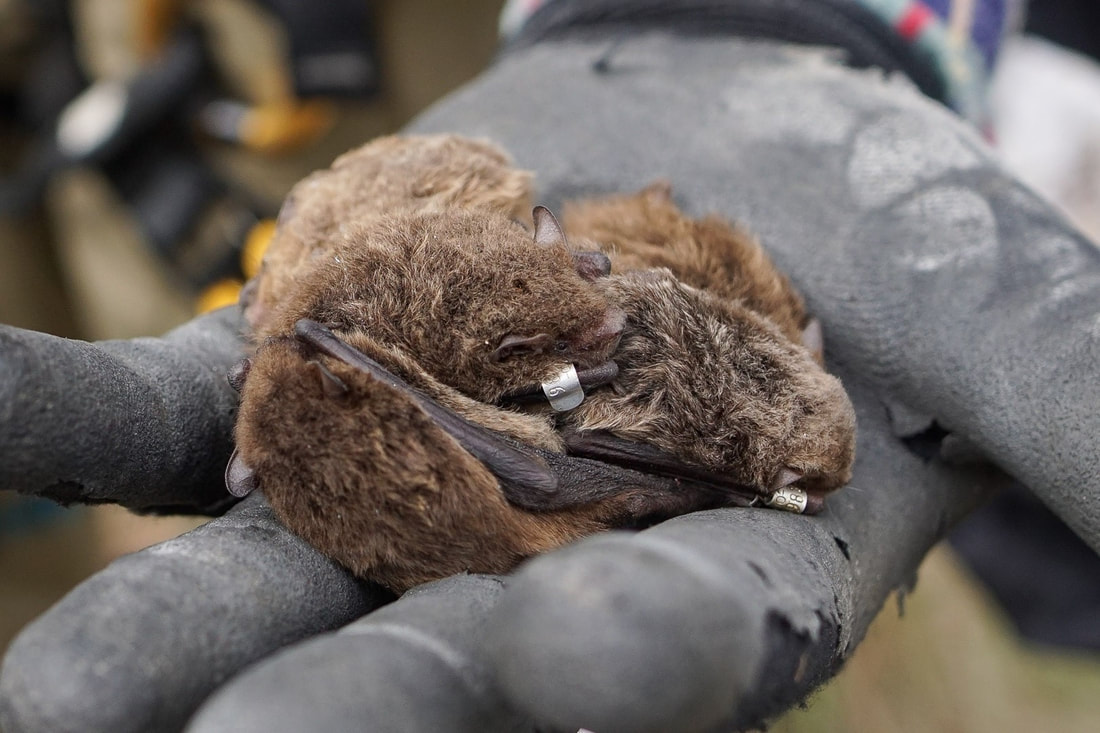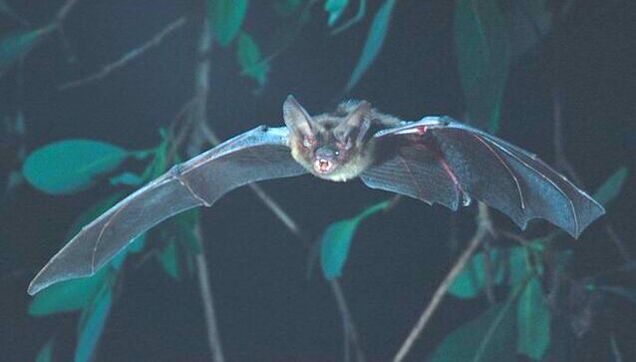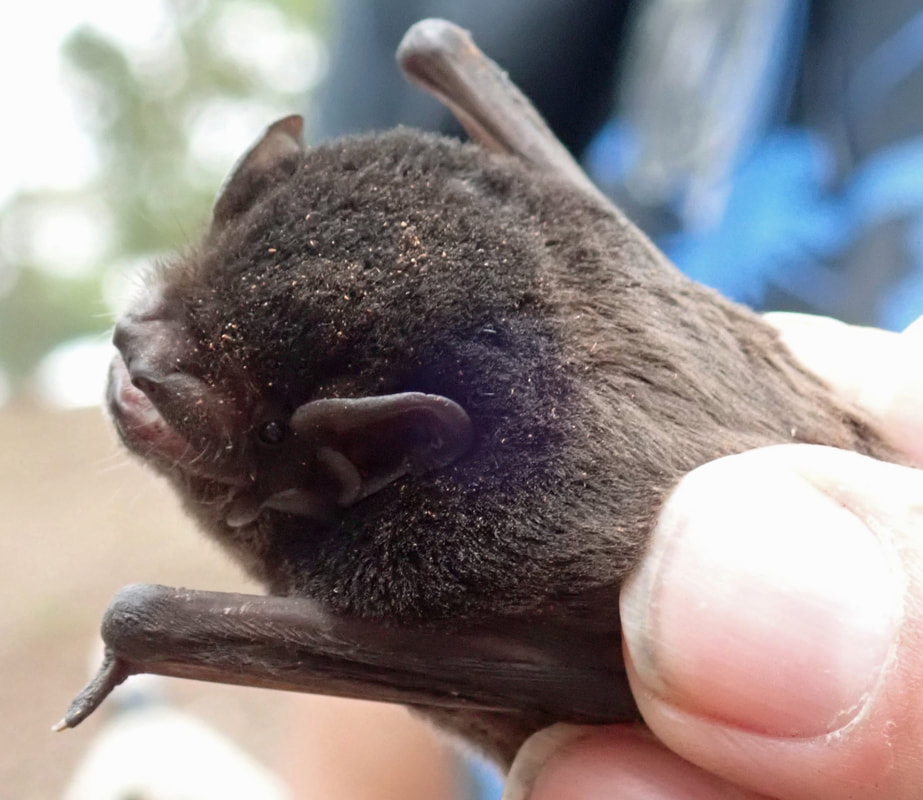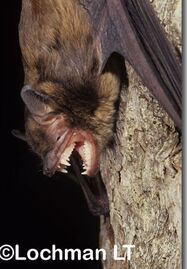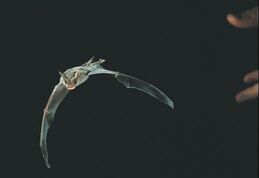There are two main types of bat: fruit bats and insectivorous micro-bats. Our local bats are micro-bats live in southern areas. Bats make up about 20% of all mammal species, yet there are lots of ‘unknowns’ about bats in Western Australia. This makes it difficult for us to assess how populations are faring across the state and to identify the extent of impacts on these populations resulting from pressures such as habitat loss, fragmentation, and other disturbances.
Fun Facts
Fun Facts
- Did you know one little microbat can eat over 1000 insects (including mozzies and other pest species) in just one night? Bats are an important part of our ecosystem and play a role as natural pest controllers! They help keep our insect populations in check.
- Bats are not only great indicators of ecosystem health, but they also aid soil quality by providing natural fertilisers (yes, I’m referring to bat guano or bat poo, and yes, it makes excellent fertiliser - some countries have even farmed and sold it!)
- Bats were originally thought to be rodents or primates but amazingly, their closest living relatives are horses and rhinoceroses!
- Just like us, bats are incredibly social animals with complex social structures and family groups. They are also incredibly long-lived for a mammal of their size with the oldest known bat living to 41 years. The photo above is a little family of barbastelle bats – grandma, mum and the two daughters have been found roosting together in the same box for multiple years!
Bats use a range of different structures to roost in, these can include trees (bats particularly love old mature trees, where they can roost in hollows, under lifted bark and in cracks), crevices in walls or under tiles, in bridges, in caves or old mines and of course bat boxes. Bats will often roost switch (switch roosts every few days) and/or move roost throughout the year depending on the season.
Our Known Bats in Our Catchment
|
Greater Long-eared Bat (Nyctophilus major)
This is species is found in forests and woodlands of Southwest Australia and South Australia. Including sub-species Western Long-eared Bat, Noongar/ common name, Bar-ba-lon (Nyctophilus major major), only occurs in the South-West of Western Australia, in the high rainfall region. This Minang-Noongar name likely applied to any of the several insectivorous bat species of the region. Prefering habitat dominated by giant eucalypts and woodland forests with dense understory. Roost sites favoured are tree hollows and amongst foliage, and beneath the loose thick bark of swamp paperbark (Melaleuca sp.) and flooded gum (Eucalyptus sp.) in riparian habitat. They forage for insect prey in the air and on the ground. The species flight is similar to some birds, using a fluttering action though their large ears (apart from the usual function in echolocation) provide directional assistance as rudders while flying. They also possess the ability to enter a lengthy period of semi-hibernation in the austral winter, a state of torpor lasting up to sixty days. Gould's wattled bat (Chalinolobus gouldii)
The Goulds wattled bat can be found in every climatic zone in Australia. They have a covering of brown fur on the back that darkens to almost black on the head and shoulders. This species of wattled bat ranges in size across its distribution – individuals in northern and eastern Australia are smaller than those from the south and west. They give birth to twins once a year normally in November/December (southern Australia) and are fully grown in about six weeks. These bats roost in the hollows of mature trees but in the absence of good tree cover, these bats will use buildings and other structures during the day. They can travel more than 10km from their roost when foraging for insects at night. Their diet is varied and can include moths, cockroaches, stoneflies, crickets, cicada and many other flying and non flying insects. While some individuals (usually males) may roost alone, colonies often hold about 30 bats. Colonies of up to 200 individuals are also known. They often fly out straight after sunset and the ambient light makes them vulnerable to predation. Western false pipistrelle (Falsistrellus mackenziei)
This species is only found in Southwest Australia. The population is declining due to loss of its habitat, old growth in tall eucalypt forest which has largely been clear felled for tree plantations, wheat cultivation and urbanisation. Their population has declined by 37% in the last 39 years, over more than three generations (21 years). The extent and area of occurrence is expected to continue to decline/reduced by 30% in the next fifty years as a result of climate change Although it is one of the largest Australian bats of the family, the species was not recorded or described until the early 1960s. A darkly colored bat with reddish brown fur and prominent ears, they fly rapidly around the upper canopy of trees in pursuit of flying insects. South-Western Free-Tailed Bat (Ozimops kitcheneri)
South-western Freetail Bats have been found in a variety of habitats from tall forests to open woodland, mallee and coastal heathland, yet little is known about their natural history. South-western Freetail Bats is vulnerable to loss of tree hollows their roosting habitat and loss of feeding grounds by forestry activities, clearing for agriculture and housing. |
White-striped free-tail bat (Austronomus australis)
This species is the largest and most widely distributed of Australia’s free-tail bats, found across all of southern Australia, except for Tasmania. It is also one of the few micro-bats that can produce echolocation calls audible to humans. It has dark brown to black fur all over with two distinctive white stripes along the sides of the belly and onto the wings. White patches also often mark the chest and occasionally the belly. A prominent throat pouch is present in both sexes. They are tree dwelling bats and can be found in rainforest, forest, open woodlands, arid shrubland, agricultural and urban areas. They tend to migrate south during summer as the cooler temperatures help to dissipate the heat they generate while flying. They tend to fly up to 50 m above ground and feed predominantly on moths, beetles and grasshoppers. Chocolate Wattled Bat (Chalinolobus morio) This species is found only in Australia, including the island Tasmania, and widespread in southern regions. Mainly roost in tree hollows, under bark and occasionally in houses and caves (south-western Australia). They are usually found in continuous forests, woodlands, mallee and open plains. Named for its uniformly milk-chocolate brown fur on its back and belly. They have a short muzzle with a steeply domed head. Roost sizes can vary from 6 to 70 females in one hollow. Males tend to roost alone. They feed mainly on moths and beetles, but their food source will depend on the abundance of aerial insects within a 5km radius of their roost. Lesser Long-eared Bat (Nyctophilus geoffroyi)
This species is found all around Australia especially seen in great abundance locally in towns and suburbs because it exploits habitat made by humans, such as garages, barns, and attics, so its numbers may have even increased in developed areas. Forms maternity colonies in spring, and young are born in the late spring or early summer. Maternity colonies are made up of as few as 10 to more than 100 individuals. Since many of the insects it feeds on also feed on crops, the use of insecticides could be detrimental to bat populations. They are also highly threatened by cats. Sometimes they will take insect offerings from and even land on a person's hand, exhibiting an apparent lack of fear or indifference toward humans. Southern Forest Bat (Vespadelus regulus) Southern Forest Bats are endemic to the southern regions of Australia including Tasmania found relatively common in coastal and sub-coastal habitat. They are an aerial predator of insects that hunts at night using echolocation. There is reddish-brown in colouring with underside coloration of greyish or light brown while it's ears and wings are dark grey. It has a very short snout and large ears. Roost in hollows in old trees and under the bark of trees. They roost together in small groups and often share their roosts with Lesser Long-eared Bats. |
What can you do for our bats?
1. Building and installing bat boxes
2. Roost counts - counting bats as they emerge from a bat roost (https://docs.google.com/.../1FAIpQLSdIW3D.../viewform... )
4. Bat walks – submit sighting to INaturalist.org.au
5. Bat call acoustic analysis - learning and assisting with the analysis of bat calls collected from bat walks and roost assessments.
2. Roost counts - counting bats as they emerge from a bat roost (https://docs.google.com/.../1FAIpQLSdIW3D.../viewform... )
4. Bat walks – submit sighting to INaturalist.org.au
5. Bat call acoustic analysis - learning and assisting with the analysis of bat calls collected from bat walks and roost assessments.
We acknowledge the Minang and Koreng people as the traditional custodians of the land on which we work and live. We pay our respects to the Elders, past, present, and emerging and to the wider Noongar community.
Sponsors and Supporters

